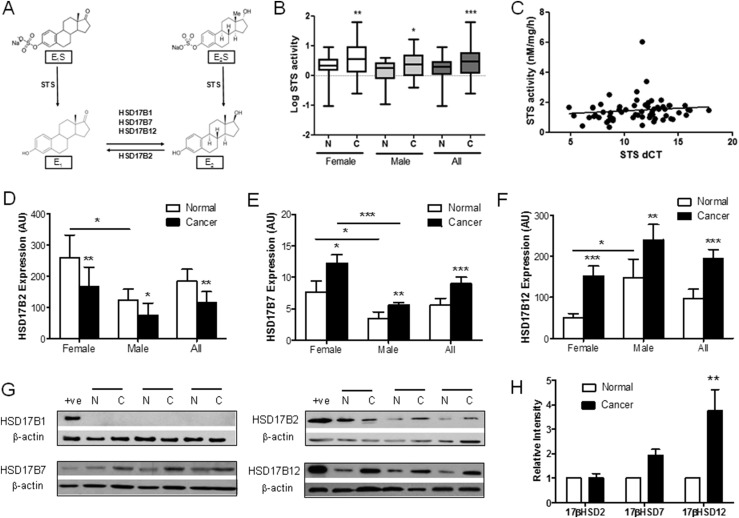Figure 1.
Estradiol synthesis pathways are upregulated in human CRC. (A) Estrogen metabolism pathways demonstrating the importance of STS and HSD17Bs in estrogen synthesis. (B) STS activity is increased in female (n = 29) and male (n = 31) CRC compared with matched normal colon tissue. *P < 0.05, **P < 0.01, ***P < 0.001 using random effects linear regression modeling. (C) STS activity does not correlate with STS expression (dCT) in CRC or normal colon tissue (n = 62). (D) HSD17B2 (female, n = 19; male, n = 28) expression is downregulated in CRC. *P < 0.05, **P < 0.01, ***P < 0.001 (two-tailed paired Student t test used). (E and F) HSD17B7 (female, n = 21; male, n = 22) and HSD17B12 (female, n = 21; male, n = 22) expression is upregulated in CRC. *P < 0.05, **P < 0.01, ***P < 0.001 (two-tailed paired Student t test used). (G and H) Representative blots and relative intensity (arbitrary unit) of HSD17B enzymes in normal and matched cancerous human colon tissue. HSD17B1 (n = 16) protein expression was not present in human CRC, but HSD17B7 was expressed, and HSD17B12 expression was increased (n = 16), with little change in HSD17B2 expression (n = 16). For relative intensity data, a two-tailed Student t test was used. All data presented as mean ± standard deviation.

